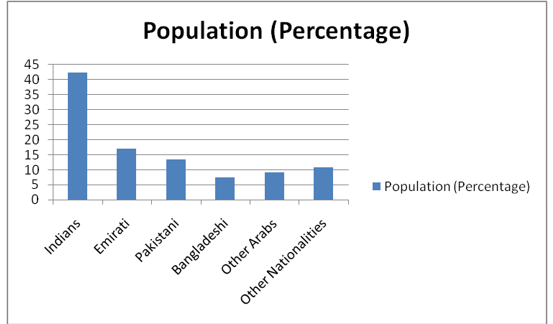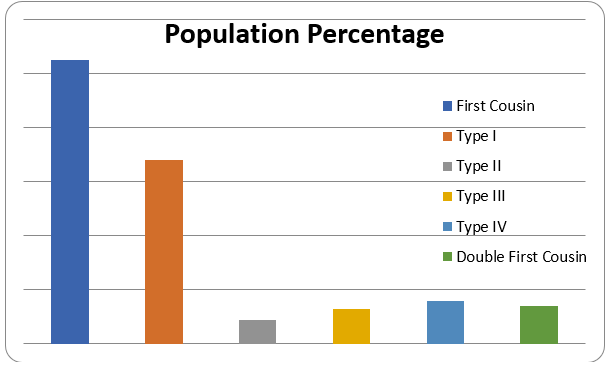Introduction
The controversy and problems surrounding marriage in the Arab world is a matter of sociological and cultural. The cultural diversity among different communities living in the Arab region affects marriages in various ways. In this sense, multiculturalism involves issues such as cultural practices and affiliations, people’s behaviour and ideological differences (Rashad, Osman & Roudi-Fahimi 2005, p. 5). In this investigation, the idea to be investigated is the ideological differences among the people living in the region. The issue that would be interesting in the idea is the ideological differences among the people living in the area, and how the differences interplay in marriage and marital decisions.
Background
Ideological difference is the variation in people beliefs and ways of life. In this case, ideology defines the assumptions regarding people’s cultural differences and its impacts on their marital choices. Different communities living in the Arab world have different practices and set of beliefs on issues relating to marriage. The unique ideological feature of marriage in Arab is that which occur among relatives, a practice called consanguinity (Ali 2011, p. 14). For instance, the rate of marriage between cousins is increasing at an alarming pace in the region. Though this is a common practice in the area, it does not occur in other parts of the world. For instance, some of the nationalities living in Dubai include Indians, Emirati, Pakistani, Bangladeshi, other Arabs, and other nationalities. The table below is a summary of the nationalities according to their population percentage.
Table 1
Source: Al-Gazali, L., et al., 1997, p. 3
The Table can be represented graphically as bellow;

Literature Review
However, even in the entire Arab world, the timings of marriages differ among the various people living in this region. Other than the consanguinity relationships, early marriage is very common in the region especially in areas such as Oman, Palestine and Yemen (Fisek & Kagitcibasi 2005, p. 3). In most parts of the Arab world, such types of marriages whether consanguinity or done at early ages, are ideologically acceptable and widely practiced.
Research has revealed that though ideologically acceptable, consanguineous marriages merely reflect the casual aspirations and desires of the partners, but not necessarily organised ones. Since the marrying partners are too close to one another during their lifetime, it is easier for them to fall in love and make marriage decision than actually looking for a distant partner (Ali 2011, p. 17).
Ideologically, the people do not consider this kind of marriage dangerous despite the imminent dangers that the act poses. However, consanguinity marriages are very dangerous because the blood relationship might affect the health and life of the offspring (Fisek & Kagitcibasi 2005, p. 3). For instance, marriage between close family members with a long background of inheritable genetic diseases can pass the infection to the offspring in this line of generation. This could threaten the future of such families because the disease can sweep the entire group. Indeed, the threat has necessitated a change of mindset on issues relating to consanguinity marriage.
Increased education in the region has really influence the prevalence and practice of consanguineous marriages (Fisek & Kagitcibasi 2005, p. 3). In various countries found in the Arab world, marriages among relatives have significantly reduced, especially among those who are educated than in less educated people. Available statistics indicate that the rate of marriages among relatives reduces according the increase on the level of education (Fisek & Kagitcibasi 2005, p. 4). For example, in Bahrain, the percentage of women who have completed their secondary education and go married to the partners with whom, they are first cousins were 18 percent (Fisek & Kagitcibasi 2005, p. 4). This was far much less than their colleagues who were illiterate, whose percentage was at 38 (Fisek & Kagitcibasi 2005, p. 4). As one progressed in education, the figure reduced further indication that education has a positive affect on one’s marital decisions especially those relating to consanguinity (Fisek & Kagitcibasi 2005, p. 4). However, the situation is rather different in UAE and Oman. In these countries, the numbers of women who get married to members who are close relatives do not vary with education level. Here, even the women with higher education still got married to their first relatives (Fisek & Kagitcibasi 2005, p. 4).
Methodology
The researcher applied sampling as the methodology for data collection. In this study, a sample of 2033 married females in the UAE was taken for the research. The study population consisted of people aged fifteen years and above. The researcher collected the data on consanguinity between the spouses, and that of the parents. The research plan involved designing a questionnaire that would be used in collecting data.
As a secondary research, the methodology was based on the available information, from archives, academic journals and electronic books. Since the topic has many other related information from previous research, the method involved a careful selection of the materials, with relevant literature. The people living in the UAE, in this situation, constituted the entire population from which the researcher drew the samples for the interview. In addition, the sampling was done randomly from all the different areas within the two cities of in Dubai and Al Ain, meaning that the sample size, in this case was representative. A representative sample ensures that the entire population is involved in the study and the outcome could be reliable.
Data Analysis
Since the research was based on quantitative data, the analysis was done by applying descriptive statistics, after which the inferential statistics were analyzed on the particular variables (Lunsford 2009, p. 33). The research also intended to establish the co-efficiencies and correlations between education and cultural practices among the communities living in the UAE. Therefore, the researcher used statistical analysis method called Analysis of Variance (ANOVA) (Lunsford 2009, p. 34). Notably, ANOVA was used to determine the significant relationship among the various variables, whether they correlate or they do not (Lunsford 2009, p. 35). Particularly, the F-test and the t-test were used to calculate the statistical inferences at 95 percent confidence level (Lunsford 2009, p. 35).
Findings
The research found out that consanguinity rate in the area covered was high and stood at 50.5 percent. The interbreeding coefficient was found to be at 0.0222. In this study, the researcher established that the first cousin consanguinity was the most prevalent form in the region and the statistics put the number of such cases at 26.2 percent. It was also established that the marriages of double first cousin was also common and stood at about 3.5 percent of the population among the indigenous people than the others. In addition, the consanguinity in the UAE rose from 39 percent to 50.5 percent within one generation. The research also established that consanguinity level was more at Al Ain, standing at about 54.2 percent and in Dubai, the rate stood at 40 percent.
Table 2: Types of consanguinity marriages and their percentages in Dubai and Al Ain Cities
Source: Al-Gazali, L., et al., p. 44.
The table could be represented graphically as below;

Chart 2: Types of consanguinity marriages and their percentages in Dubai and Al Ain Cities
Explanation
As presented in the graph, it is clear that the first cousin marriage is widely practiced in the region with 26.2 percent of consanguinity marriages recorded. Under the first cousin marriages, type I was most prevalent at seventeen percent, while the other types was recorded low between 2.2 to 3.9 percent. This is an indication that the ideological differences among the communities living in the UAE have tolerance to the practice compared to other regions in the world.
Conclusion
In summary, the idea of ideological differences among the people living in the region is an issue that needs adequate research. People in the UAE have distinct practices and ways of life different from the other parts of the world. For example, among the people of the UAE, consanguinity marriage is a common and acceptable practice. According to the study outcome, it was established that the first cousin consanguinity was the most prevalent form in the region and the statistics posted the number of such cases at 26.2 percent, with a co-efficiency of 0.0222. Moreover, it became apparent that the consanguinity in the UAE rose from 39 percent to 50.5 percent within one generation.
The research has proved the idea of ideological difference among the people and its impacts on the people’s decisions and way of life. Though education was found to have more influence on marital decision, it was a different situation in UAE and Oman. The research showed that in these countries, the numbers of women who got married to members, who are close relatives, do not vary with education level. This was due to the fact that even the women with higher education still got married to their first relatives.
The research has created a new topic that more need to be done about the issue of consanguinity marriage because in some countries in the Arab world, despite increasing education, the practice is still on the rise. The need to control, minimise or eradicate the practice became apparent.
References
Ali, R., 2011, Multiculturalism, OUP Oxford, Oxford.
Al-Gazali, L., et al., 1997, Consanguineous Marriages in the United Arab Emirates, Hindustan Publishing Corporation, Delhi.
Fisek, G., & Kagitcibasi, C., 2005, Productivity within the Multicultural Perspective, CBS Publishing, New York.
Lunsford, S., 2009, Survey Analysis. AchieveGlobal Inc, Florida.
Rashad, H., Osman, M., & Roudi-Fahimi, F., 2005, Marriage in the Arab World, Population Reference Bureau, Washington DC.